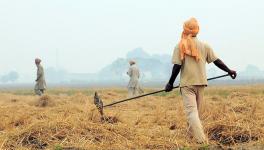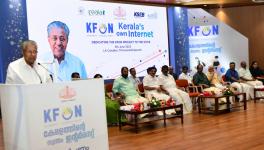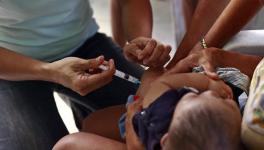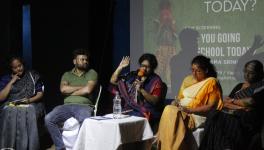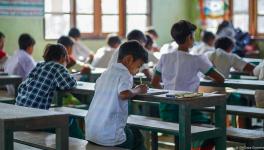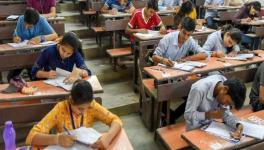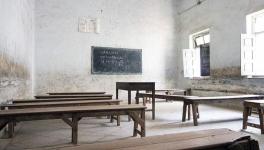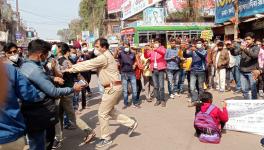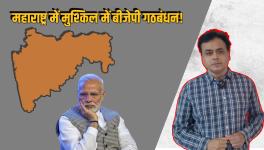‘Globally, 72% Schoolchildren Unable to Access Remote Learning are From Poorest Households’
New Delhi: At least a third of the world’s schoolchildren–463 million children globally–were unable to access remote learning when COVID-19 shuttered their schools, according to a new UNICEF report released on Thursday.
“For at least 463 million children whose schools closed due to COVID-19, there was no such a thing as remote learning,” said Henrietta Fore, UNICEF Executive Director, according to a statement released by the UNICEF on Thursday. She added, “The sheer number of children whose education was completely disrupted for months on end is a global education emergency. The repercussions could be felt in economies and societies for decades to come.”
The report highlights significant inequality across regions. According to it, schoolchildren in sub-Saharan Africa are the most affected, where at least half of all students cannot be reached with remote learning, followed by West Asia and North Africa, and South Asia. A total of 67 million children, that is 49% of the schoolchildren are unable to access remote learning in East and Southern Africa.
The number of children unable to access remote learning in West and Central Africa and West Asia and North Africa are 54 million (48%) and 37 million (40%) respectively. While this proportion is slightly lower in South Asia, at 48%, the number of children unable to access remote learning, at 137 million, is much higher.
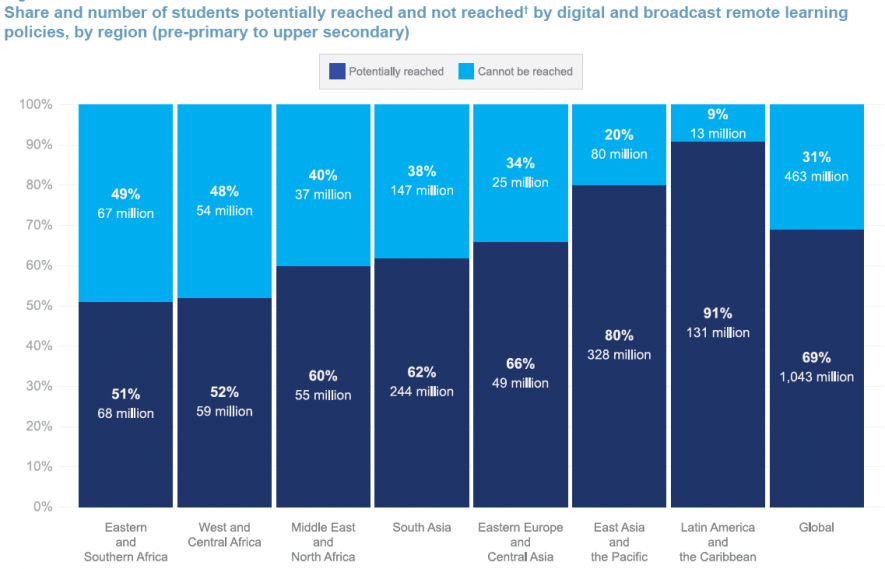
Several rural areas in India were deprived of remote learning as well, the report pointed out. The optic fibre network under the Narendra Modi government’s flagship BharatNet project—that the Union government claimed is the world’s largest rural broadband internet project—has not reached most Gram Panchayats yet, according to a parliamentary panel report from March.
School children from poor and rural households across the world were the most disadvantaged, according to the UNICEF report. Globally, at least 72% of schoolchildren, that is, 333 million, were unable to access remote learning were from the poorest households in their countries.
The report showed upper-middle-income countries failed to ensure equality in access to remote learning as well. In these countries, school children from the poorest households accounted up to 86 per cent of students unable to get digital learning access. Globally, three-fourths of school children without such access, live in rural areas, the report pointed out.
Across countries, the most common approach was digital instruction, which was used by 42% of countries for pre-primary education, 74% of countries for primary education and 77%of countries for upper secondary education. Many countries have also developed broadcast curricula (television- and radio-based), especially for primary and lower secondary students.
In the African countries and South Asia, the number of children reached by remote learning through the internet is significantly lower as compared to other regions. Except in Eastern Europe and Central Asia, the greatest number of children in all regions accessed remote learning through television.
UNICEF has urged governments to prioritise the safe re-opening of schools when they begin easing lockdown restrictions. When reopening is not possible, UNICEF had urged governments to incorporate compensatory learning for lost instructional time into school continuity and reopening plans. School opening policies and practices must include expanding access to education, including remote learning, especially for marginalised groups, said the organisation, and added that education systems must also be adapted and built to withstand future crises.
Get the latest reports & analysis with people's perspective on Protests, movements & deep analytical videos, discussions of the current affairs in your Telegram app. Subscribe to NewsClick's Telegram channel & get Real-Time updates on stories, as they get published on our website.









